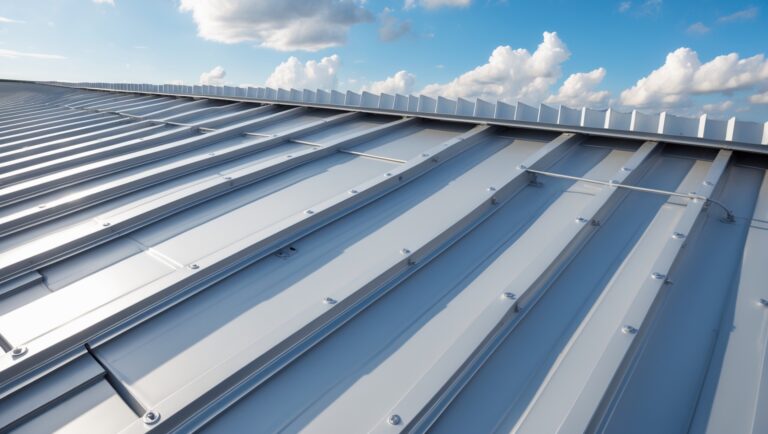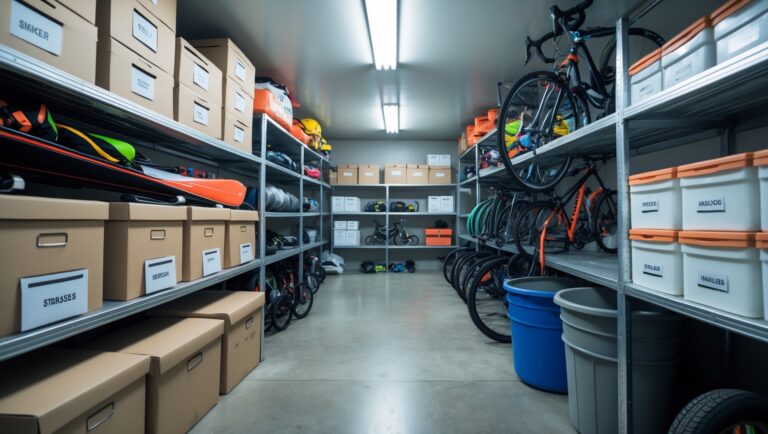The Lifecycle of a Storage Unit: From Setup to Decommissioning
Introduction: Understanding the Storage Unit Lifecycle
Storage units are an essential part of the modern moving and storage industry, providing flexible options for individuals and businesses alike. Yet, behind every successful storage facility is a lifecycle that extends far beyond the initial installation. From sourcing and setting up units to their ongoing maintenance, compliance checks, and, eventually, safe decommissioning, each stage presents unique challenges and opportunities for optimization. As a facility owner or manager, understanding this full lifecycle is critical—not only for maximizing asset value and customer satisfaction but also for ensuring operational efficiency and regulatory compliance.
This in-depth guide walks you through every phase of a storage unit’s life. Whether you’re planning to expand your facility, purchase new units, or responsibly retire aging ones, you’ll find actionable strategies and best practices to navigate each step. We delve into key considerations for setup, outline maintenance and inspection routines, address compliance and safety, and finally, explain how to decommission units in a cost-effective and environmentally responsible manner. Let’s explore how to manage your storage units from the day they arrive on your lot to the moment they leave it.
Phase 1: Planning and Selecting Storage Units
Assessing Your Needs
Before acquiring new storage units, conduct a thorough assessment of your facility’s goals, customer base, and property layout. Key factors include:
- Market Demand: Analyze local demand for different unit sizes (e.g., 5×5, 10×20), climate control, and specialty features.
- Facility Layout: Consider lot size, traffic flow, access points, and potential for expansion.
- Budget Constraints: Balance upfront investment with projected ROI and maintenance costs.
Choosing the Right Type of Units
- Traditional Metal Units: Durable and customizable for most facilities.
- Modular/Portable Units: Offer flexibility for growing facilities or temporary storage needs.
- Climate-Controlled Units: Essential for regions with extreme temperatures or for serving customers with sensitive items.
Factor in build quality, manufacturer reputation, and warranty options. Consult with vendors about anti-theft features, fire resistance, and ease of relocation.
Phase 2: Installation and Initial Setup
Site Preparation
Proper site preparation lays the foundation for unit longevity and customer safety. Steps include:
- Ground Leveling: Ensure the site is level and properly drained to prevent water intrusion.
- Foundation: Choose between concrete slabs, asphalt, or gravel bases, considering local climate and soil conditions.
- Utility Planning: Plan for lighting, climate control, and security installations.
Unit Assembly and Positioning
Follow manufacturer guidelines for assembly to ensure warranty validity. Use professional installers when needed, especially for large modular units. Key tips:
- Align units to maximize space and facilitate easy navigation for vehicles and customers.
- Allow adequate spacing for fire code compliance and emergency access.
- Install security features (locks, cameras) during setup to avoid retrofitting costs later.
Phase 3: Ongoing Maintenance and Upkeep
Routine Inspections
Establish a regular inspection schedule—quarterly is common—to identify wear, weather damage, or security vulnerabilities. Inspect:
- Doors, locks, and hinges for smooth operation and signs of tampering.
- Roofing and walls for leaks, cracks, or rust.
- Floors for water damage or pest entry points.
Preventive Maintenance Tasks
- Lubricate Door Mechanisms: Prevent rust and ensure ease of use.
- Seal Gaps and Cracks: Keep out moisture and pests.
- Clean Gutters and Drains: Prevent water pooling near units.
- Touch-Up Paint: Address scratches or chips to deter rust and maintain curb appeal.
Addressing Customer-Caused Wear
Establish clear policies for reporting damages and set expectations with tenants about responsible use. Encourage prompt reporting of issues and offer incentives for long-term tenants who maintain their units.
Phase 4: Compliance and Safety Considerations
Regulatory Requirements
Stay current with federal, state, and municipal codes governing storage facilities. Key areas include:
- Fire Safety: Ensure compliance with fire marshal requirements for access, suppression systems, and emergency signage.
- Accessibility: Meet ADA standards for unit access and facility navigation.
- Environmental: Address stormwater management and hazardous material restrictions.
Security Protocols
Implement robust security measures to protect your investment and customers’ property:
- Install surveillance cameras and lighting in all common areas.
- Use coded access gates and individual unit alarms where feasible.
- Regularly audit access logs and update security procedures as needed.
Insurance Implications
Maintain appropriate coverage for property damage, liability, and business interruption. Review policy terms annually and update as your facility grows or modifies its offerings.
Phase 5: Upgrades and Retrofitting
Improving Existing Units
To stay competitive and extend unit lifespan, consider periodic upgrades:
- Climate Control Additions: Retrofit selected units with HVAC systems to attract new customer segments.
- Security Enhancements: Upgrade locks, install new cameras, or add motion-activated lighting.
- Structural Reinforcements: Strengthen doors and frames to withstand weather and attempted break-ins.
When to Replace vs. Upgrade
Monitor the cost-benefit of continued repairs versus full replacement. Signs it’s time to decommission a unit include:
- Persistent water leaks or rust despite repairs.
- Outdated design incompatible with current security or climate control needs.
- Repeated customer complaints or low occupancy rates for specific units.
Phase 6: Decommissioning and Removal
Planning for Decommissioning
Decommissioning is more than simply removing an old unit. It’s a process that should be planned in advance to minimize disruption and maximize salvage value. Steps include:
- Notification: Inform tenants well in advance of any scheduled removals or closures.
- Clear-Out: Ensure all personal property is removed and units are inspected for hazardous materials.
- Safety Checks: Disconnect utilities and secure the area to prevent accidents during removal.
Environmental Responsibility
Dispose of decommissioned units responsibly:
- Recycling: Many metal components can be recycled. Partner with local recyclers for eco-friendly disposal.
- Repurposing: Explore local demand for used units as sheds, workshops, or temporary offices.
- Hazardous Waste: Properly handle any asbestos, lead paint, or other hazardous materials in accordance with regulations.
Site Restoration
After removal, restore the site to its original or improved condition:
- Fill and level the ground where units stood.
- Reseed grass or repave areas as necessary to maintain facility appearance.
- Inspect for damage to nearby structures or utilities and repair as needed.
Phase 7: Documenting and Learning from the Lifecycle
Keeping Accurate Records
Maintain thorough documentation at every stage:
- Installation and warranty records
- Maintenance logs and inspection reports
- Incident and repair histories
- Decommissioning and disposal receipts
Good documentation helps with warranty claims, audits, and planning future investments.
Continuous Improvement
Regularly review lifecycle data to identify patterns in unit performance, failure rates, and customer satisfaction. Use these insights to inform future purchasing decisions and operational policies.
Conclusion: Maximizing Value Across the Storage Unit Lifecycle
Successfully managing the lifecycle of your storage units requires more than reactive maintenance or occasional upgrades. It demands a proactive, holistic approach that starts with strategic planning and continues through careful setup, diligent upkeep, regulatory compliance, and ultimately, responsible decommissioning. Each phase offers opportunities to enhance operational efficiency, reduce costs, and improve customer experience.
By understanding the full journey of your storage units, you can make informed decisions about when to invest in upgrades, how to extend useful life, and the best methods for safe and sustainable removal. As the moving and storage industry evolves, facility owners who master lifecycle management will be best positioned to adapt, grow, and thrive in a competitive marketplace.
Whether you’re launching a new facility or optimizing an established one, use this lifecycle approach as your roadmap. Regularly assess your processes, invest in staff training, and stay informed about technological and regulatory changes. In doing so, you’ll protect your assets, delight your customers, and build a resilient, future-proof business.






